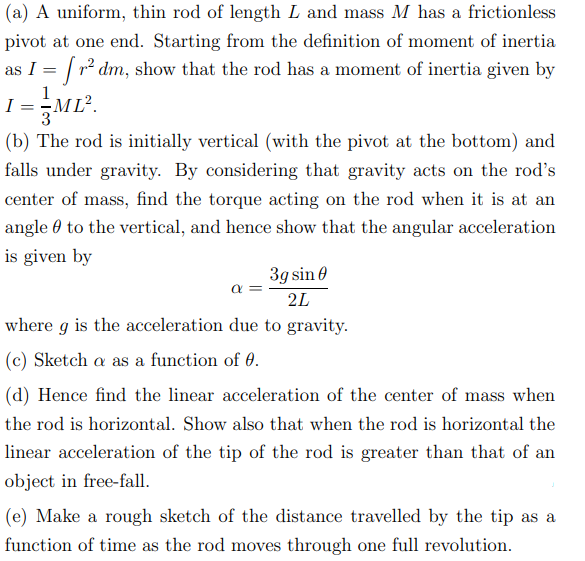(a) A uniform, thin rod of length L and mass M has a frictionless pivot at one end. Starting from the definition of moment of inertia as I = | r² dm, show that the rod has a moment of inertia given by 1 -ML². 3 (b) The rod is initially vertical (with the pivot at the bottom) and falls under gravity. By considering that gravity acts on the rod's center of mass, find the torque acting on the rod when it is at an angle 0 to the vertical, and hence show that the angular acceleration
Rigid Body
A rigid body is an object which does not change its shape or undergo any significant deformation due to an external force or movement. Mathematically speaking, the distance between any two points inside the body doesn't change in any situation.
Rigid Body Dynamics
Rigid bodies are defined as inelastic shapes with negligible deformation, giving them an unchanging center of mass. It is also generally assumed that the mass of a rigid body is uniformly distributed. This property of rigid bodies comes in handy when we deal with concepts like momentum, angular momentum, force and torque. The study of these properties – viz., force, torque, momentum, and angular momentum – of a rigid body, is collectively known as rigid body dynamics (RBD).

Trending now
This is a popular solution!
Step by step
Solved in 4 steps with 2 images







